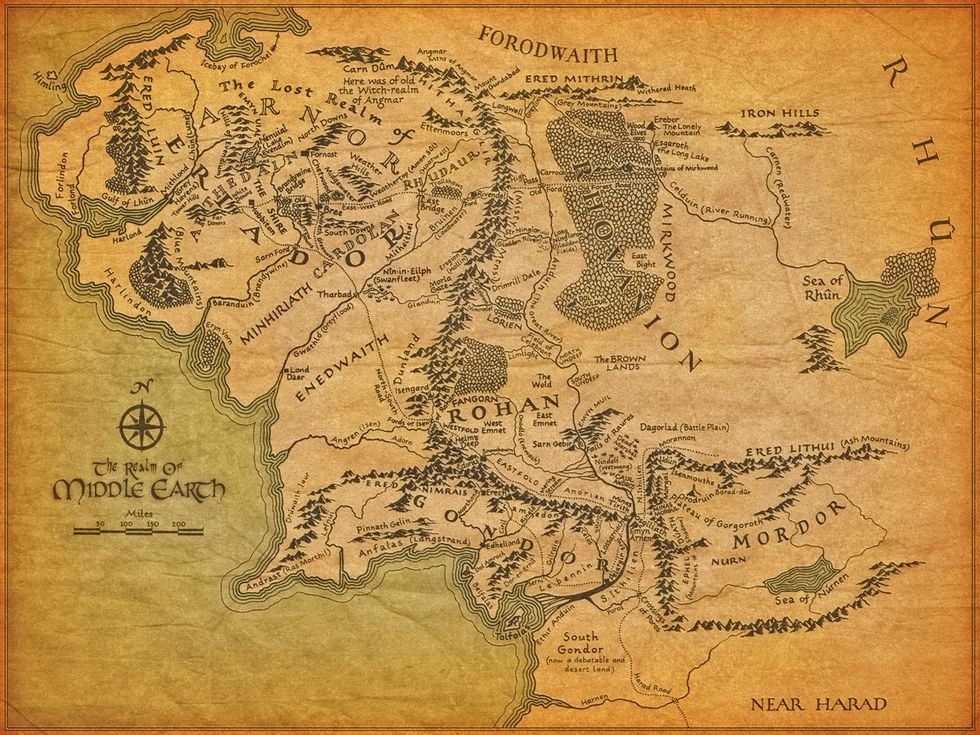The creations of J. R. R. Tolkien--primarily, The Hobbit and The Lord of the Rings--have become a symbol in America's pop culture, from memes about Legolas to the cry of "My Precious!" when someone drops their onion ring. Most people have seen the movies, read the books, or inferred the key elements of the story from their friends and social media accounts. Very few people would argue that Tolkien's work is anything short of genius, and for good reason. Tolkien was not only creative, but he was incredibly thorough in his creation. It’s hard to grasp the details of all the years Tolkien poured into his Middle-Earth, but I hope to at least show a little bit of the background of what was to become one of the most famous fictitious languages, Elvish.
Tolkien once described The Lord of the Rings as “Fundamentally linguistic in inspiration,” and, “Largely an essay in ‘linguistic’ aesthetic.” For most of us, the idea of linguistic significance would be near the bottom of our list of important things when it comes to Tolkien’s writing. But Tolkien was a long-time lover of languages, and it profoundly influenced how he created and wrote about Middle-Earth. In the first couple decades of his life, Tolkien learned Latin, French, Greek, German, Middle English, Old English, Old Norse, Finnish, Spanish, Italian, Gothic, medieval, and modern Welsh, Russian, Swedish, Danish, Norwegian, Dutch, and Lombardic. With this incredible arsenal at his disposal, Tolkien began to flesh out the languages of his Middle-Earth.
Elvish is typically divided between Sindarin and Quenya. To think of them as dialects of the same language would not be entirely accurate--rather, as Tolkien saw it, Quenya is to Sindarin as Old English is to modern English. Both share common roots, but they have diverged in grammar, sound, and vocabulary over the years in Middle-Earth. These differences can be dissected (and have been by many erudite linguistic scholars) to the same level as any other language in the real world, with grammar, phonetics, and constructions broken down.
Given such intricacy and detail, Quenya and Sindarin are not randomly created and cobbled together, unlike the gibberish languages and secret codes children try to invent. Quenya is based in Finnish, both in its structure and its sound. For example, Finnish has no c except in borrowed words, and Quenya’s c has the sound value of k, but never a c as in nice. In contrast, Sindarin is largely constructed to resemble Welsh, both in sound and structure. Formally, Quenya is High Elven and Sindarin is Gray-Elven. Sindarin is considered to be the “prettier” of the two languages, with more mellifluous vowels that come early in the word instead of later. However, Quenya is the language of high court and ceremony, and is used by kings, both Elven and others, for their titles.
Besides Elvish, The entire premise of The Lord of the Rings has a linguistic disposition. Tolkien pretends that he has discovered ancient texts written in Westron, also known as Common Speech, which he has translated into English. The funny thing is that there’s a kind of language inception. Westron is the language of man and the hobbits, but when non-Westron languages are encountered--like Rohirrim (Rohan’s language) or Elvish---they are translated and described in Westron. So when Tolkien translates Westron, the non-Westron languages become twice-removed from their original state.
Tolkien’s ingenuity with languages is a remarkable feat in its own right. It doesn’t take a master linguist to appreciate Tolkien’s skill. And language is just a part of the Middle-Earth he envisioned. The world of The Lord of the Rings and The Hobbit are well-accounted for in his many detailed books and essays about Middle-Earth. If I had an ounce of Tolkien’s thoroughness and devotion, I think I’d be set for the rest of my life.















